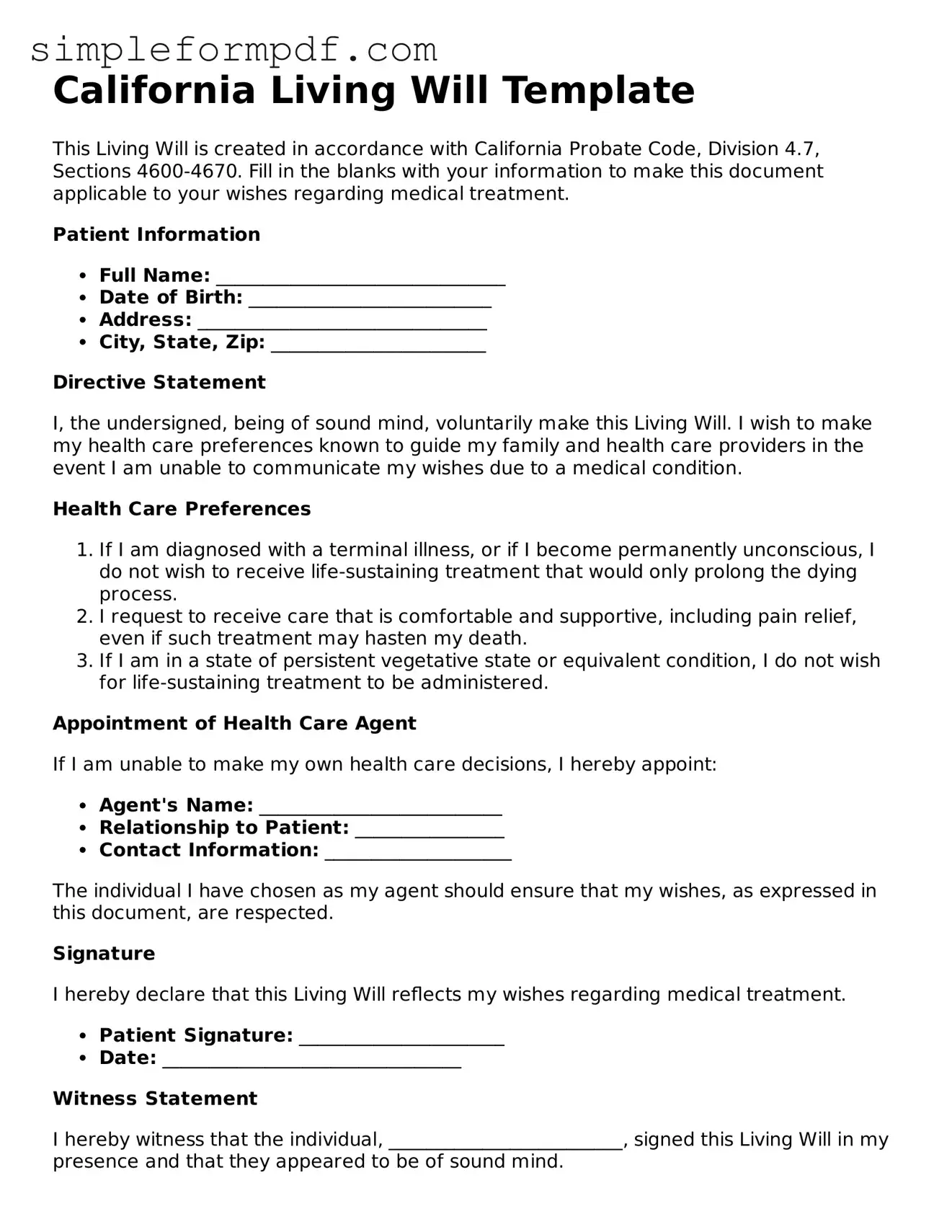California Living Will Template
This Living Will is created in accordance with California Probate Code, Division 4.7, Sections 4600-4670. Fill in the blanks with your information to make this document applicable to your wishes regarding medical treatment.
Patient Information
- Full Name: _______________________________
- Date of Birth: __________________________
- Address: _______________________________
- City, State, Zip: _______________________
Directive Statement
I, the undersigned, being of sound mind, voluntarily make this Living Will. I wish to make my health care preferences known to guide my family and health care providers in the event I am unable to communicate my wishes due to a medical condition.
Health Care Preferences
- If I am diagnosed with a terminal illness, or if I become permanently unconscious, I do not wish to receive life-sustaining treatment that would only prolong the dying process.
- I request to receive care that is comfortable and supportive, including pain relief, even if such treatment may hasten my death.
- If I am in a state of persistent vegetative state or equivalent condition, I do not wish for life-sustaining treatment to be administered.
Appointment of Health Care Agent
If I am unable to make my own health care decisions, I hereby appoint:
- Agent's Name: __________________________
- Relationship to Patient: ________________
- Contact Information: ____________________
The individual I have chosen as my agent should ensure that my wishes, as expressed in this document, are respected.
Signature
I hereby declare that this Living Will reflects my wishes regarding medical treatment.
- Patient Signature: ______________________
- Date: ________________________________
Witness Statement
I hereby witness that the individual, _________________________, signed this Living Will in my presence and that they appeared to be of sound mind.
- Witness Name: ____________________________
- Witness Signature: ______________________
- Date: __________________________________
This document should be kept in a safe place and distributed to relevant parties, including family members and your primary health care provider.
